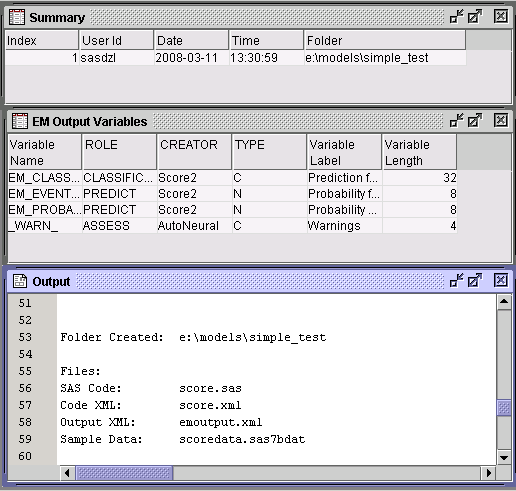Output Created by the Score Code Export Node
Output Files
The Score
Code Export node writes the following output files, and a format catalog,
if applicable, to the location specified by the Output Directory property.
These files are used as input to the %INDTD_PUBLISH_MODEL macro that
creates the scoring functions.
|
A description of the
final variables that are created by the scoring code. This file can
be kept for decision-making processes. These variables include the
primary classification, prediction, probability, segment, profit,
and loss variables created by a data mining process. The list does
not include intermediate variables created by the analysis. For more information
about these variables, see Fixed Variable Names.
|
|
Output Variables
The score
code produced by SAS Enterprise Miner creates both intermediate variables,
such as imputed values of missing values, transformations, and encodings;
and output variables, such as predicted value and probability. Any
of these created variables can be used in a scoring process.
Tip
The number of
input parameters on a scoring function has a direct impact on performance.
The more parameters there are, the more time it takes to score a row.
A recommended best practice is to make sure that only variables that
are involved in a model score evaluation are exported from SAS Enterprise
Miner.
The most
important output variables for the scoring process follow a naming
convention using a prefix, as shown in the following table.
Fixed Variable Names
The Score
node of SAS Enterprise Miner maps the output variable names to fixed
variable names. This mapping is appropriate in cases where there is
only one prediction target or one classification target. In other
cases, refer to the output variable names described in the previous
table.
Using
the fixed variable names enables scoring users to build processes
that can be reused for different models without changing the code
that processes the outputs. These fixed names are listed in the emoutput.xml
file and are described in the following table. Most scoring processes
return one or more of these variables.
